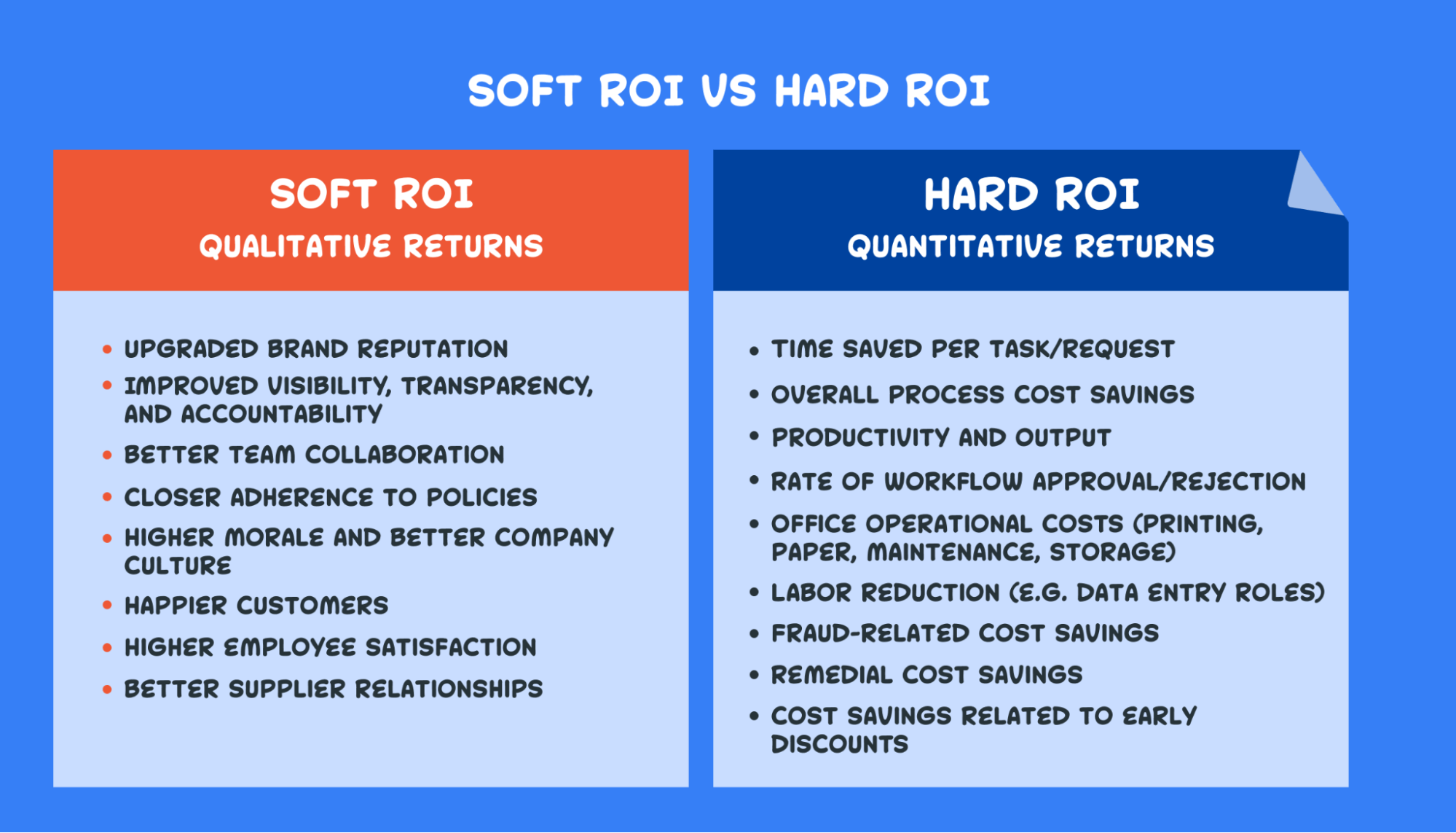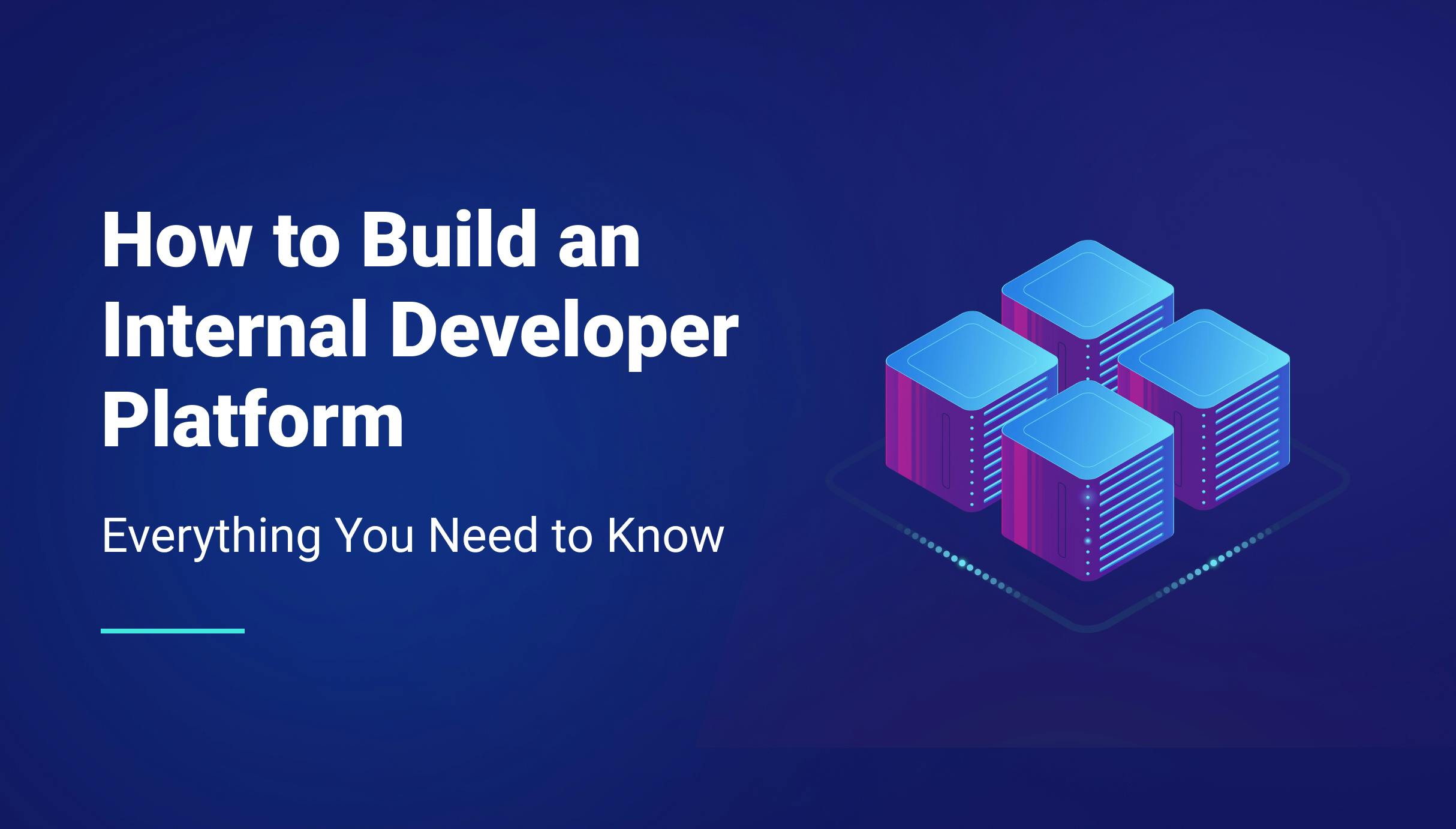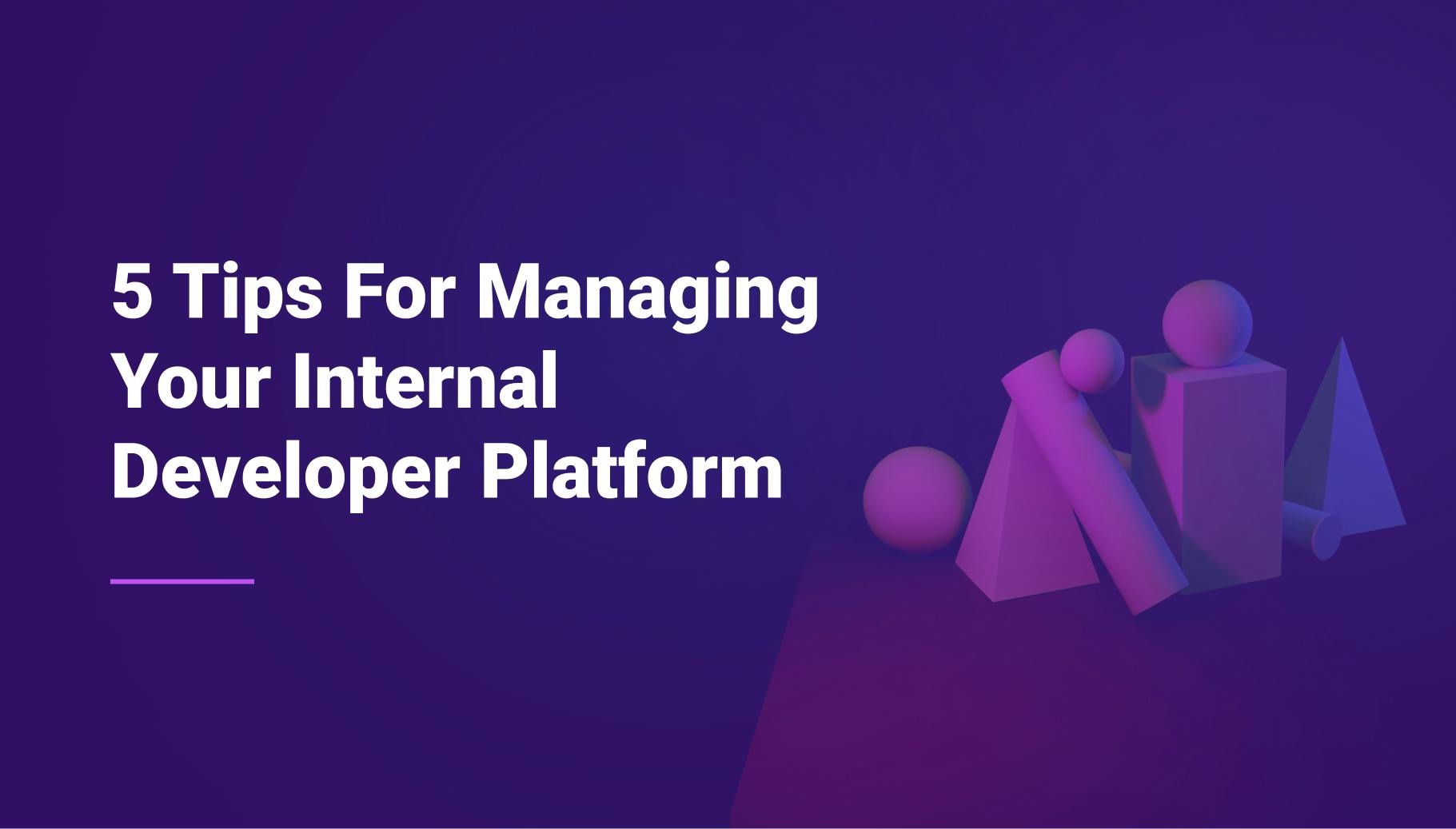Internal Developer Platform: What's the ROI?
Internal Developer Platform (IDP) is a game-changing innovation that has transformed the technology landscape. In the previous article, we discussed in detail the effectiveness of these developer platforms in terms of developer efficiency, faster product releases, frequent collaboration, etc. However, one aspect that is of paramount importance, especially from the business perspective, is the ROI. The first question any manager will ask is, "What will be the ROI of investing in an IDP"? And your response should be in numbers, of course. This is exactly what we will discuss today. Not only we will explore the meaning of ROI in the context of IDPs, but we will also go through how to measure the ROI, what constitutes a good ROI, and how to improve it. Let's start with the basics of ROI and IDP.

Morgan Perry
October 16, 2023 · 9 min read
#Introduction to Internal Developer Platforms
#What is an Internal Developer Platform (IDP)?
At its foundation, an IDP is a platform that streamlines the software development process by providing developers with a collection of tools and resources.
It is comparable to a toolkit for a builder: each tool serves a specific purpose, and when combined, they enable the builder—or, in this instance, the developer—to efficiently produce a robust product.
#Role of IDPs in Software Development
With the swift evolution of the software development landscape, the demands placed on developers have increased. This is where IDPs come into play. Here is how they play their part:
- Transformation: In the contemporary software industry, IDPs perform a pivotal role. They facilitate the transition of organizations to a DevOps methodology and cloud-centric engineering practices by offering a unified platform.
- Efficiency: Do you recall the time when developers were required to manage multiple tools, resulting in time and revenue losses? Well, IDPs are changing that. They consolidate numerous tools into a single umbrella, enabling developers to devote more time to construction rather than time spent transitioning between tools. For example, before adopting an IDP, a developer might need three different tools to deploy an application, but with an integrated IDP, they might only need one.
- Security: In an environment where security breaches can jeopardize a company's reputation, IDPs prioritize the provision of secure environments. This guarantees that the products created by developers are not only functional but also secure.
#Why IDP's are crucial for development teams
- Team Collaboration: IDP provides a shared environment for teams to collaborate, exchange resources, and improve their overall experience in product development.
- Cost-effective: Organizations of all sizes maintain a close eye on expenses. By reducing the need for multiple standalone tools and refining processes, IDPs can result in substantial cost savings.
- ROI is Critical: Regarding expenses, the ROI (return on investment) of adopting an IDP is evident. Not only does the seamless experience result in tangible cost savings for businesses, but it also expedites product releases and optimizes developer time utilization.
#Understanding the ROI Paradigm and Its Importance
#ROI in Software Development: What It Means and How to Calculate It
Simply said, return on investment (ROI) calculates the profit or loss from an investment as a percentage of the initial investment. Software development ROI refers to the amount of money an organization makes back after spending it on software development tools, resources, and platforms.
Discussing ROI in the context of software development reveals that corporations gain benefits beyond just monetary ones when investing in development platforms and related tools. Among its benefits are a shortened development cycle, improved developer experience, and a higher-quality final product.
#Why ROI assessment is vital for development teams
1. The ROI Factor in Resource Allocation: Understanding the significance of ROI in resource allocation is crucial for development teams. By analyzing the ROI, businesses can clearly determine the advantages of allocating funds to specific development resources. With a clear understanding of ROI:
• Companies can justify their expenditures on new tools and platforms, ensuring every dollar spent brings value.
• Development teams are better equipped to align their goals with the overall goals of the company.
• Strategic investments, such as those in cloud services and other software, become clearer pathways to maximizing returns for the business.
2. Improved Resource Allocation: DevOps, cloud infrastructure, and security measures all benefit from better allocation of resources when teams evaluate the return on investment (ROI) of available options. By doing so, we can guarantee that our engineering and development teams have access to state-of-the-art resources, elevating the quality of our final products.
Challenges of measuring ROI in software projects
The advantages of a development platform are not always quantifiable in monetary terms. It is valuable yet hard to put a price on features like improved developer experience, better security, and teamwork collaboration.
3. Time factor: A software investment's full returns may take some time to materialize. Adopting a new platform or technology may not immediately increase a company's return on investment. Consider a startup that invested in a cutting-edge IDP. While they noticed better team collaboration immediately, it took them 4 months to see a significant reduction in software bugs and increased customer satisfaction.
4. Fluctuating Costs: Development has a wide range of expenses, from setup and training to maintenance and upgrades. Because of these uncertainties, calculating a return on investment can be difficult for businesses.

#Quantifying the Impact and ROI of IDPs
#How IDPs lead to tangible benefits
- Increasing Productivity: IDPs, or Internal DeveloperPplatforms, provide developers with a diverse set of tools in one unified platform. A comprehensive approach reduces tool searching time, speeding both software and product development. IDPs optimize development and DevOps processes, improving engineering and development team efficiency and effectiveness.
- Workflow Optimization: Development-DevOps workflow synchronization is often difficult. IDPs provide a consistent platform for communication. Cloud integration in most Identity and Access Management (IAM) systems ensures teams have constant access to vital resources, enabling continuous development.
- Cost Reduction: By integrating various technologies and resources into a single platform, enterprises can cut overhead costs. Resource allocation optimization and time inefficiency reduction increase development investment value for companies. For instance, a startup found that by consolidating their software tools into a single IDP, they saved around $20,000 annually on license fees alone.
#Methodologies and steps for calculating ROI
ROI Definition for Developer Platforms: Developer platform ROI measures and evaluates the financial benefits and profitability of investing in and using such platforms. Return on Investment (ROI) in Internal Developer Platforms (IDPs) is the quantifiable benefits an organization receives for deploying and maintaining the platform.
Calculating ROI involves the following steps:
- Calculate the initial and ongoing expenditures of the IDP, including software licensing, training, and maintenance.
- Calculate the financial benefits since implementing the IDP. This can save time, reduce engineering overheads, reduce security breaches, or faster product releases.
- The ROI formula is as follows: ROI = Net Profit / Development Program Cost multiplied by 100%.
#Components in ROI Calculations for IDPs
- Development costs include platform development costs, licensing fees, cloud service, third-party vendors, and developer training.
- Efficiency after adopting IDP: Measure how fast teams can produce and release software after using the IDP. Time saved might be valued at hourly rates or product delivery milestones.
- Allocate Resources: An effective IDP uses human and computational resources better. Calculate resource optimization and waste reduction savings.

#Strategies and Benchmarks for Successful IDP ROI
#Industry Benchmarks for IDP ROI
Understanding the ROI of IDPS: This ROI quantifies the profit or loss from a technological or platform investment relative to the capital invested. Organizations utilizing IDPs regard it as an essential metric.
How good is good ROI? A successful IDP ROI signifies more than mere cost reductions for numerous organizations. It focuses on enhancing security, accelerating software and product development, and improving the developer experience. Organizations strive for accelerated product launches, reduced development time, and decreased engineering overheads as industry standards advance. One example of investing in an internal developer platform is Amazon’s Apollo. Amazon’s internal deployment service, Apollo, enhances efficiency and reliability in deployments. Apollo is used daily by thousands of Amazon developers, resulting in 50 million deployments in the past year. Although exact savings aren’t specified, the improved efficiency suggests significant cost reductions.
#Actionable strategies for maximizing ROI with an IDP
1. Quantifying the Direct Benefits: To fully grasp the return on investment (ROI) of an IDP, the benefits must be quantified. For example, a business may quantify the reduction in development time in weekly hours saved. Multiplying the number of hours spared by the average hourly rate of a developer would yield cost savings.
2. Measuring and Tracking Metrics for IDP ROI:
- Set KPIs: Define key performance indicators to help you determine the ROI. Some examples include deployment frequency (e.g., increasing deployments from 10 to 50 per day) or lead time for changes (e.g., reducing lead time from 48 hours to 24 hours).
- Use Analytics Tools: Integrate tools that provide you valuable insights regarding different metrics. For example, you can use tools like Prometheus or Grafana to track as average system uptime or the frequency of system outages.
- Benchmarking: Compare your metrics against industry standards, e.g., system latency or error rates (e.g., aiming for 99.9% uptime, in line with top industry performers).
3. Optimal Tool Selection for Progress: Methods to optimize IDP Platform tools have the potential to either facilitate or hinder the progress of developers. Equipping your team with the right tools on a platform designed for building rather than just exploration empowers them to create more effectively. Some useful tools regarding IDP include Kubernetes, Qovery, Terraform, Datadog, etc.
4. Efficient Use of Resources for Improved ROI: By effectively utilizing cloud resources and other integrations, it is possible to significantly decrease expenditures and enhance return on investment (ROI). It's crucial to allocate resources toward product development while also conserving money.
5. The Intangible ROI from Robust Security: Return on investment (ROI) stemming from enhanced security measures is more challenging to quantify but nonetheless crucial. An approach that could be taken is to estimate the potential cost savings associated with a security breach, taking into account factors such as reputation damage, regulatory penalties, and lost business.
#Long-term sustainability of ROI
- Systematic platform assessment: Since the field of development is perpetually evolving, consistently evaluating and revising the platform ensures that it remains pertinent and beneficial to development teams.
- Continuous Training: Developers must stay updated due to frequent modifications and updates. Training enables them to optimize the platform, thereby increasing ROI.
- Feedback Loop: Frequent feedback improves comprehension of the issues and requirements of development teams. Implementing this input maintains the IDP's value and increases the organization's ROI.
#Conclusion
Well, that was not as complex as you would have thought. The popularity of Internal developer platforms is increasing day by day. We all know the magic of IDPs regarding developer efficiency, effective team collaboration, faster product-to-market, etc. However, this article touched upon a critical subject of ROI for IDP in detail. We discussed how to calculate the ROI, including the formula, the intangible benefits of IDP, and how to maintain this ROI when using the IDP in the long run. However, understanding ROI is only half the battle. To capitalize on these insights, organizations should consider:
- Periodic ROI Re-evaluation: As technology is evolving rapidly, it's vital to re-evaluate your ROI metrics periodically. Such assessments can guide further investments and improvements in IDPs.
- Strengthening Developer Training: Continuous training and upskilling can not only optimize the returns on an IDP but also ensure that developers can make the most of platform updates.
- Act on Feedback: Taking actionable steps based on regular feedback from users will make sure that the platform remains relevant and continues to deliver value.
By following these steps, companies can better understand the worth of their IDP investments and ensure their developer platforms consistently produce strong results and benefits in the future.
Your Favorite Internal Developer Platform
Qovery is an Internal Developer Platform Helping 50.000+ Developers and Platform Engineers To Ship Faster.
Try it out now!

Your Favorite Internal Developer Platform
Qovery is an Internal Developer Platform Helping 50.000+ Developers and Platform Engineers To Ship Faster.
Try it out now!


